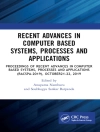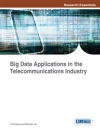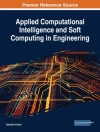This book provides an excellent reference for all professionals
working in the area of array signal processing and its applications
in wireless communications.
Wideband beamforming has advanced with the increasing bandwidth
in wireless communications and the development of ultra wideband
(UWB) technology.
In this book, the authors address the fundamentals and most
recent developments in the field of wideband beamforming. The book
provides a thorough coverage of the subject including major
sub-areas such as sub-band adaptive beamforming, frequency
invariant beamforming, blind wideband beamforming, beamforming
without temporal processing, and beamforming for multi-path
signals.
Key Features:
* Unique book focusing on wideband beamforming
* Discusses a hot topic coinciding with the increasing bandwidth
in wireless communications and the development of UWB
technology
* Addresses the general concept of beamforming including fixed
beamformers and adaptive beamformers
* Covers advanced topics including sub-band adaptive beamforming,
frequency invariant beamforming, blind wideband beamforming,
beamforming without temporal processing, and beamforming for
multi-path signals
* Includes various design examples and corresponding complexity
analyses
This book provides a reference for engineers and researchers in
wireless communications and signal processing fields. Postgraduate
students studying signal processing will also find this book of
interest.
Tabela de Conteúdo
Preface
Acknowledgements
1 Introduction
1.1 Array Signal Processing
1.2 Narrowband Beamforming
1.3 Wideband Beamforming
1.4 Wideband Beam Steering
1.5 Summary
2 Adaptive Wideband Beamforming
2.1 Reference Signal-Based Beamformer
2.2 Linearly Constrained Minimum Variance Beamforming
2.3 Constraints Design for LCMV Beamforming
2.4 Generalized Sidelobe Canceller
2.5 Other Minimum Variance Beamformers
2.6 Robust Adaptive Beamforming
2.7 Summary
3 Subband Adaptive Beamforming
3.1 Fundamentals of Filter Banks
3.2 Subband Adaptive Filtering
3.3 General Subband Adaptive Beamforming
3.4 Subband Adaptive GSC
3.5 Temporally/Spatially Subband-Selective Beamforming
3.6 Frequency-Domain Adaptive Beamforming
3.7 Transform-Domain Adaptive Beamforming
3.8 Summary
4 Design of Fixed Wideband Beamformers
4.1 Iterative Optimization
4.2 The Least Squares Approach
4.3 The Eigenfilter Approach
4.4 Summary
5 Frequency Invariant Beamforming
5.1 Introduction
5.2 Design Based on Multi-Dimensional Inverse Fourier Transform
5.3 Subband Design of Frequency Invariant Beamformers
5.4 Frequency Invariant Beamforming for Circular Arrays
5.5 Direct Optimization for Frequency Invariant Beamforming
5.6 Beamspace Adaptive Wideband Beamforming
5.7 Summary
6 Blind Wideband Beamforming
6.1 Blind Source Separation
6.2 Blind Wideband Beamforming
6.3 Blind Beamforming Based on Frequency Invariant Transformation
6.4 Summary
7 Wideband Beamforming with Sensor Delay-Lines
7.1 Sensor Delay-Line Based Structures
7.2 Frequency Invariant Beamforming
7.3 Adaptive Beamforming
7.4 Beamspace Adaptive Beamforming
7.5 Summary
8 Wideband Beamforming for Multipath Signals
8.1 The Wideband Multipath Problem
8.2 Approach Based on a Narrowband Beamformer
8.3 Approach Based on Blind Source Separation
8.4 MIMO System
8.5 Summary
Appendix A: Matrix Approximation
Appendix B: Differentiation with Respect to a Vector
Appendix C: Generic Algorithm
C.1 The Principle
C.2 Design Example in Section 3.5.2
Bibliography
Index
Sobre o autor
Dr. Wei Liu, University of Sheffield, UK
Dr Liu received his B.Sc. in Space Physics (1996) and L.L.B in Intellectual Property Law (1997) from Peking University, China; M.Phil. in Filter Banks and Wavelets from the Department of Electrical and Electronic Engineering, University of Hong Kong (2001); Ph D in Digital Beamforming from the Communications Research Group, School of Electronics and Computer Science, University of Southampton (2003). He then worked as a postdoc in the same group and later in the Communications and Signal Processing Group, Department of Electrical and Electronic Engineering, Imperial College London, where he moved to the area of blind source separation. In September 2005, Dr Liu joined the Communications Research Group, Department of Electronic and Electrical Engineering, University of Sheffield, as a lecturer.
Dr. Stephan Weiss, University of Strathclyde, Scotland
Dr Weiss received the degree of Diplom-Ingenieur in Electronic & Electrical Engineering from the University of Erlangen-Nürnberg in 1995, and the Ph D in the same subject from the University of Strathclyde in 1998. Interrupted by a leave in 1996/97 as a visiting scholar at the Signal and Image Processing Institute, University of Southern California, he was a research student in the Signal Processing Division, University of Strathclyde. He held a visiting lectureship in the EEE Department at Strathclyde in 1998/99, and joined the Communications Research Group of the Electronics and Computer Science Department at the University of Southampton as a lecturer in 1999. He was promoted to a senior lecturership at University of Strathclyde in 2003.












